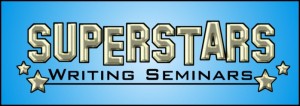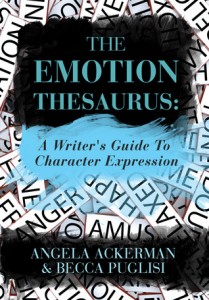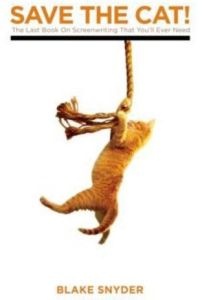The Superstars Writing Seminar focuses exclusively on the business of writing, so you won’t hear any writing craft lectures.
I’ve attended two of them so far, in Salt Lake City (2011) and Las Vegas (2012), and they were excellent, motivating, and provided great networking opportunities.
You get to hear best-selling authors talk about how they broke in and what publishers are looking for in an author. They take you through the details of real book contracts (Eric Flint’s to be exact) and royalty statements. You’ll hear in-depth discussion of the need (or not) for an agent, the many ways to exploit your copyrights through new media, TV, and film, and practical issues such as writing ergonomics and improving productivity.
That last point was the biggest take-away for me. Superstars reset my standard of productivity waaaaay higher. When Kevin J. Anderson projects a slide showing how many books he released in only one year, one gets the picture that making a living at writing, means writing a lot of content.
If you balk at the registration fee, be assured that the value of the seminar is very high. The days are packed, and the faculty is very accessible for questions and will often join attendees during lunch breaks (or a late beer with Kevin if you’re so inclined.)
The VIP dinner ($150 add-on) is an extraordinary experience. It’s truly a unique opportunity to pepper a best-selling author with questions while enjoying top notch cuisine. If you don’t leave stuffed and inspired, it’s your own fault. If you can swing it, don’t miss it.
Another great benefit of Superstars is the community of alumni. Once you’ve registered, you get access to the private Facebook group, which always has lively discussions. Writers post questions, ask for opinions on back cover copy and cover art, post news from the publishing world, and brag when something cool happens in their career.
The deets:
Who: Kevin J. Anderson, Rebecca Moesta, Dave Farland, Eric Flint
Guest Speakers: James A. Owen, Joan Johnston, Jim Minz (Baen), Mark Leslie LeFebvre (Kobo) | Read the faculty and guest speaker bios
What: Superstars Website | Cost: $849 before 28 Feb, $899 after (student and alumni rates available) | VIP Dinner: $150
When: May 14-16
Where: Colorado Springs, CO (Antlers Hilton, block room rates available)
Why: Because if you want to make a living with your writing, it’s time to get down to business.



